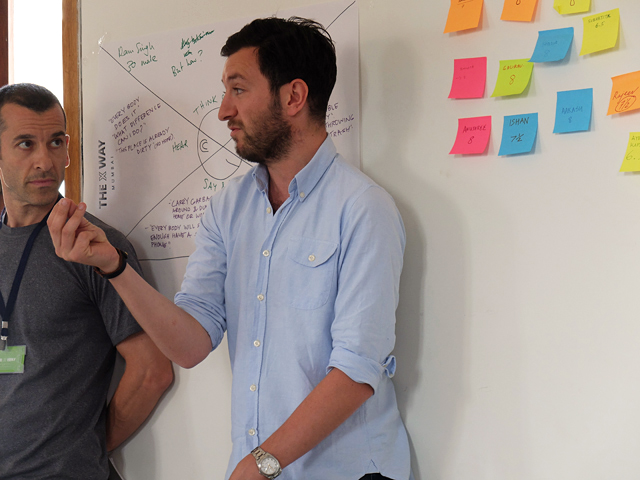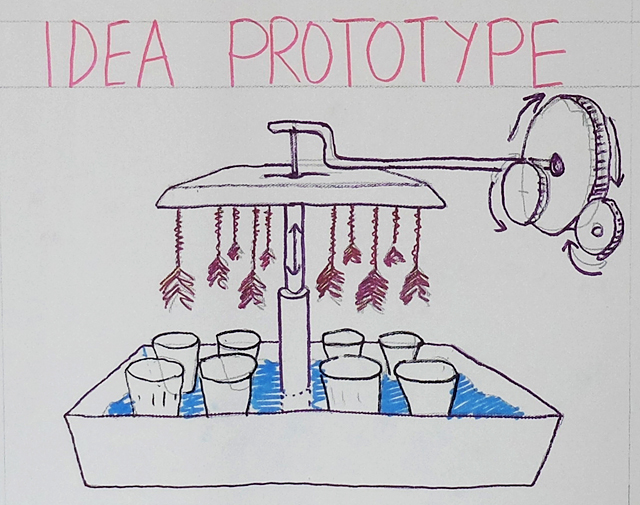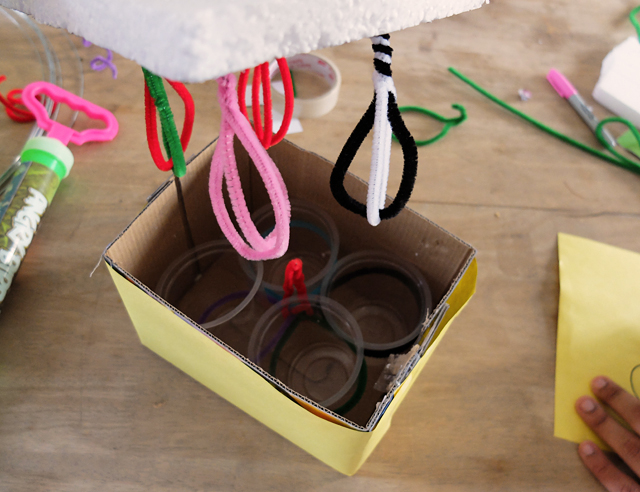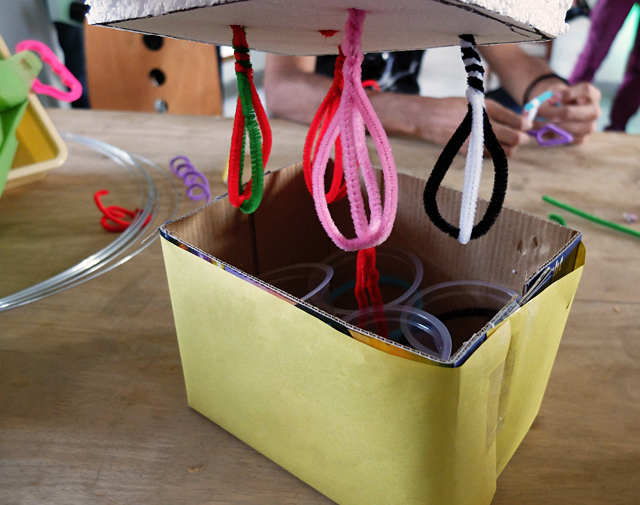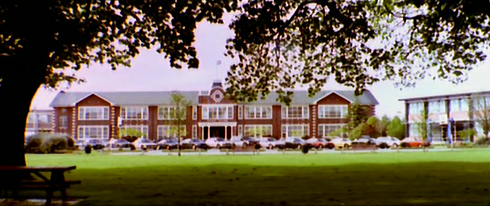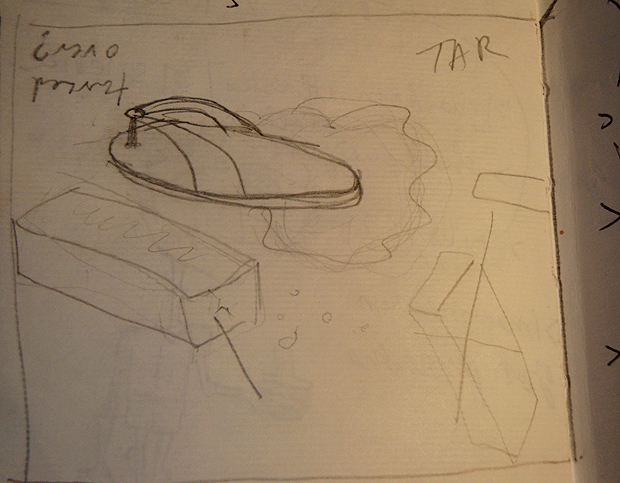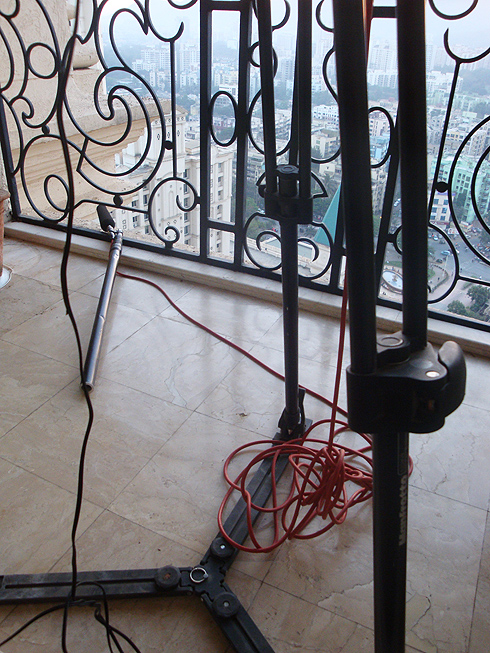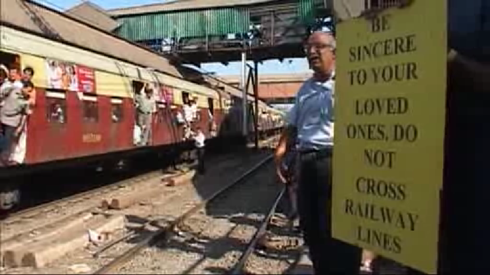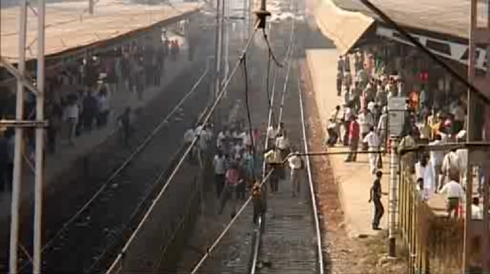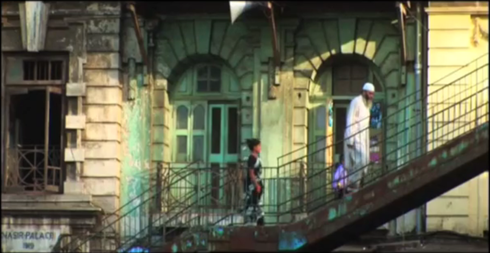Creating the Jugaad Dishwasher, The X-Way
The X-Way was a 2 day workshop sponsored by Nokia and Microsoft that focused on ideas, strategies and discussion around improving Mumbai city. Ben & Andrew moderated the workshop, keeping it challenging as twenty creatives and innovators came together with many, many city ideas.
The X-Way was a 2 day workshop sponsored by Nokia and Microsoft that focused on ideas, strategies and discussion around improving Mumbai city. Ben & Andrew moderated the workshop, keeping it challenging as twenty creatives and innovators came together with many, many city ideas.
One of the interesting exercises was listing things we love and hate about Mumbai. It was heartening to see that the 'love' pile was so much bigger despite Mumbai's numerous faults.
When discussing Mumbai's numerous problems, traffic cannot be ignored. Everything to do with traffic and way-finding is contextual. Signage is missing in a lot of places. When pedestrians give directions, the meaning may be different depending on the tone of their voice, how they stand, hand gestures and language. Honking has varied meanings depending on frequency, tones, loudness and the length of each honk. The city is a hotbed of large scale issues and topics of interest.
My team eventually looked at pavement ownership as a microcosm of health and sanitation. How could we encourage and create value in a public space such as pavement. We were in posh areas of Mumbai, and even here we found street hawkers taking ownership of pavements (in a good way) keeping them clean and ensuring their part of the pavement was maintained. Eventually we focussed even further and came up to a sugarcane vendor. Could we come up with something to help him wash the glasses in his stall while he was busy doing a million other things like making the juice, serving and cashing. A lot of times hygiene and proper washing was way down in his priorities while multi-tasking.
The final concept after two days of guerrilla research and quick prototyping was the 'jugaad dishwasher' - a mechanically automated machine that washed glasses saving the vendor time and effort as he ran a one-man operation. The washer connects to the juice machine itself so it doesn't need electricity to run. Soap is optional here since most vendors do not use soap. Overall the 'jugaad dishwasher' concept could also work for other street hawkers, juice vendors and with a few upgrades could even save time in someone's kitchen.
Check out some photos of the prototype we made. The video below has a few shots of us talking to sugarcane vendors.
The rotating juicer translates into the up and down movement of the simple washer, which repeatedly rinses the glasses. The trough can be easily refilled and cleaned and occupies minimal space.
Arduino Yun Workshop
The two day workshop by Ankit Daftery was a great way to dig deep into the possibilities of the Yun. As an interactive artist, I'm already aware of various options available. Trying them out was empowering and surprising. You can make complex interactions with just two to three days of effort [as a beginner], especially at an affordable price.
The two day workshop by Ankit Daftery was a great way to dig deep into the possibilities of the Yun. As an interactive artist, I'm already aware of various options available. Trying them out was empowering and surprising. You can make complex interactions with just two to three days of effort [as a beginner], especially at an affordable price.
This example converts two fruits into a drum kit, sort of a very basic version of the famous Makey Makey. Below is a short video of the test.
Vikhroli Skin - Prep
My most recent work will be displayed at this event sponsored by Godrej Labs on the 14th of Dec. It is going to be 200 thousand square feet of art, performances and culture, so don't miss out if you are in Mumbai.
My most recent work will be displayed at this event sponsored by Godrej Labs on the 14th of Dec. It is going to be 200 thousand square feet of art, performances and culture, so don't miss out if you are in Mumbai. The space is an abandoned Godrej factory which will be demolished soon after the art event. The factory will be moved elsewhere. It is deeply relevant to the story of Mumbai and how it has grown into post-industrialization. Here are some images of the space, once the setup starts I will do my best to share photographs of the buildup.
The plan is create an interactive installation using projections, the audience and city images. It is going to be a real challenge setting up an installation outdoors, in the day time, where electricity is coming in from generators. Limited electricity means that planning and testing the installation in another location is crucial.
Gallery Reflexive
Work by Prajakta Palav. It caught my eye because of the way she had used the gallery floor in her work. It is intelligent and relevant, especially in these old buildings in South Mumbai that are converted into gallery spaces.
Prajakta Palav (Dec, 2011). This caught my eye because of the way she has used the gallery floor in her work. It is intelligent and relevant, especially in these old buildings of South Mumbai that are converted into gallery spaces. What I love about this is how the work is almost indistinguishable from the gallery floor at first glance. It makes you sit up and pay attention. Here are some pictures I managed to take from my mobile phone.
Mumbai's First Comic Con
Mumbai's first comic con was crowded and full of enthusiastic fans and artists. I even met several NID alumni and graphic designers, so I'm hoping there will be another one next year. Amongst the notable independent graphic novels being sold, the ones that caught my eye were Hush: A Silent Scream, Twelve: Prelude 0.2, Milk and Quickies and The Itch You Can't Scratch.
Hush by Pratheek Thomas and Rajiv Eipe. Manta Ray Comics, India.
Detail, inside page.
The preview of the book is beautifully illustrated and literally breaks the silence on a socially relevant and taboo topic with a depth of understanding. It gave me so much hope for the future of independent art like this in our cities.
Twelve: Prelude 0.2 by Jasyot Singh Hans and Prabha Mallya. A collection of short stories.
Wonder Bai by Abhijeet Kini, a hilarious series. Others such as Wolver Anna, Angry Moushi etc. were also sold.
Post-Traumatic Urbanism
Cities like Mumbai and Beirut have developed in unstable uncertainty and in many ways are resilient survivors. They have adapted with 'redundant networks' and 'diversity and distribution' rather than 'centralized efficiency' which makes them flexible in the face of shocks to infrastructure (Lahoud, 2010).
Mumbai as a city has undergone several traumatic events in the past few years. Those in my direct memory and experience are the 26/11 attacks and the painfully recent 2011 bombings. Earlier I argued that despite these tragic events the city in essence remained the same. How does a city survive these traumatic events whether they are natural flash floods or terror attacks, and in what way does it change? Today people try to understand how cities survive and evolve through math and science. As a philosophy urbanism states that cities are vitally important to the progress of humanity. In his talk The Surprising Math of Cities and Corporations, West argues that cities are both the solution and the problem, underlining their bipolarity.
And the tsunami of problems that we feel we're facing in terms of sustainability questions, are actually a reflection of the exponential increase in urbanization across the planet... However, cities,despite having this negative aspect to them, are also the solution. Because cities are the vacuum cleaners and the magnets that have sucked up creative people, creating ideas, innovation, wealth and so on. So we have this kind of dual nature. (Geoffrey West, 2011)
West explains why cities are so successful when he says 'You could drop an atom bomb on a city, and 30 years later it's surviving. Very few cities fail.' Mumbai as a city has survived several traumatic events over the past two hundred years, though nothing on such a catastrophic level. It is an ancient place that has been ruled by a succession of invaders. There is even evidence that suggest that the islands have been colonized by humans since the Stone Age. Each event in this recorded and unrecorded past have changed the landscape and its people, but I am most interested in its recent traumas.
So cities are extremely successful, bipolar creatures. But how do traumas affect them? Philosopher and critical theorist Andrew Benjamin says that 'trauma involves a more complex sense of place.' He proposes that the city contains forgotten and repressed settings that are beyond memory but always present, creating an 'estrangement' and sense of the 'unaccustomed' when such events return.
The term 'post-traumatic' refers to the evidence of the aftermath - the remains of an event that are missing. The spaces around this blind spot record the impression of the event like a scar. (Lahoud, 2010. p.19).
Cities like Mumbai and Beirut have developed in unstable uncertainty and in many ways are resilient survivors. They have adapted with 'redundant networks' and 'diversity and distribution' rather than 'centralized efficiency' which makes them flexible in the face of shocks to infrastructure (Lahoud, 2010). When it comes to events like the most recent bomb attack in 2011, the city picked up the pieces and went on the next day as if nothing had happened. Local trains continued to run. The event was given its significant narrative by the media and the places that were bombed were cleared up. Memories and the gaps created by such violence will always remain an intrinsic part of the city's architecture. But it is Mumbai's impenetrable resilience in the face of such catastrophes that fascinates me. Events such as 9/11 in a first world country completely derailed the city, but in Mumbai it was in many ways business as usual. But forgetting like we do in Mumbai does not erase the hurt.
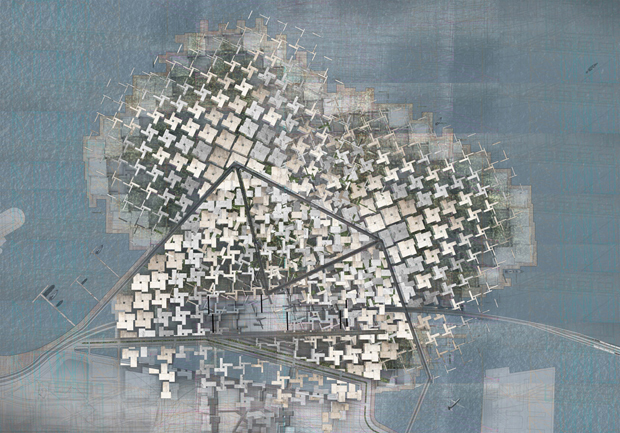 The Diversity Machine and Resilient Network, 2009. Social Transformation Studio. Martin abbot, Georgia Abbot, Clare Johnston, Joshua Lynch and Alexandra Wright.
The Diversity Machine and Resilient Network, 2009. Social Transformation Studio. Martin abbot, Georgia Abbot, Clare Johnston, Joshua Lynch and Alexandra Wright.
Anthony Burke says that the reason cities are so difficult to predict is that they are very complex systems 'growing at the edge of chaos.' Even small events can lead to avalanche-like conditions because both natural and human-made catastrophes display a self-organizing criticality or the:
...tendency of large systems with many components to evolve into a poised, `critical' state, way out of balance, where minor disturbances may lead to events, called avalanches, of all sizes. Most of the changes take place through catastrophic events rather than by following a smooth gradual path. The evolution to this very delicate state occurs without design from any outside agent. The state is established solely because of the dynamical interactions among individual elements of the system: the critical state is self-organized. Self-organized criticality is so far the only known general mechanism to generate complexity. (Per Bak, 1997, p.1).
The idea that a city is on the verge of chaos is not far from many narratives in western popular culture. The accepted line is that just one push is enough to bring the whole system crumbling down. However the theory above is not as simple as that, these systems are large and therefore extremely difficult to destroy completely. Its heartening to see that even human cities are in the end, part of nature, and follow patterns similar to natural phenomenon such as weather.
Although there are no definitive answers to what post-traumatic urbanism is the term itself raises critical questions and discussion. An often quoted statistic today is that the urban world is larger than the rural world, which underlines the importance of trying to understand urban trauma and its effect on the city and its people. In my journey to capture the essence of Mumbai, to explore unexpressed feelings of conflict created by repressed events and resolve my own perceptions and experience; it is this complexity which is central to understanding my art.
Reference: Benjamin, A. (2010). Trauma within the Walls: Notes towards a philosophy of the city. Architectural Design. Vol. 80. No.5. pp.24-31. Burke, A. (2010). The Urban Complex: Scalar probabilities and Urban Computation. Architectural Design. Vol. 80. No.5. pp.87-91. Lahoud, A. (2010). Post Traumatic Urbanism. Architectural Design. Vol. 80. No.5. pp.14-23. Per Bak. (1996). How Nature Works: The Science of Self-Organised Criticality. Copernicus Press: New York. West, G. (2011). The Surprising Math of Cities and Corporations. [online]. Available from http://www.ted.com/talks/geoffrey_west_the_surprising_math_of_cities_and_corporations.html [Accessed 2nd Aug. 2011].
Dayanita Singh
I am especially interested in her attempts to express her own visions of a place or city, opposing the singular story people usually expect about India, that of 'sensational catastrophes and human failures'
Phil mentioned Singh in connection to my work on Mumbai because of her series of photographs titled Dream Villa. Her landscape images of Mumbai resonate with the kind of video I'm using for my installation. I am especially interested in her attempts to express her own visions of a place or city, opposing the singular story people usually expect about India, that of 'sensational catastrophes and human failures' (Cotter, H. 2005). Dream Villa 11. 2008. Dayanita Singh [Image Source]
House of Love 2010. Dayanita Singh. [Image Source].
Reference: Cotter, H. 2005. Objects of Repose and Remembrance. New York Times. [online]. Available from: http://www.nytimes.com/2005/03/30/arts/design/30cott.html?ex=1172638800&en=840b508f152bce9e&ei=5070 Date Accessed: 21st July 2011.
Degen, N. 2008. Dayanita Singh. Frieze Magazine. [online]. Available from: http://www.frieze.com/shows/review/dayanita_singh/. Accessed: 21st July 2011.
Dayanita Singh: House of Love. La Lettre. [online]. Available from: http://lalettredelaphotographie.com/entries/dayanita-singh-house-of-love. Date Accessed: 7th August 2011.
Danger of a Single Story
This brilliant TED video by novelist Chimamanda Adichie articulates what I often have to say about Mumbai while here in UK. Namely, yes there is poverty and yes we have slums - but these are proud people who are more than just the anonymous poor.
This brilliant TED video by novelist Chimamanda Adichie articulates what I often have to say about Mumbai while here in UK. Namely, yes there is poverty and yes we have slums - but these are proud people who are more than just the anonymous poor. They don't want your useless pity. When I make art about Mumbai I often have to defend my work and my position to outsiders because it is not the typical vision of what people imagine Mumbai to be, which is terrible disparity and nothing else. She is also quick to point out however, that all of us have at one point or the other indulged in a 'single story.' Whats important is to be aware of it and avoid it as much as possible.
Sound Test
After reading people's comments and feedback on street sounds from Mumbai, research into the meaning of urban noise and visiting a few sound installations I decided to test the recordings. Phil helped me set up using an m-audio firewire box, a set of speakers and Logic Pro. The software is great to control specific channels of sound and play with traffic rumblings in real-time. The test helped me understand how such software can be used to make a room feel larger or smaller than it is. I also realized that the sound project was massive and needed another three months before it could move into a room on its own without visuals. I may still set up another test after the final show and record the results for the sake of experiment, since I loved mixing the noise together.


The test inspired me to begin learning the Quartz Composer, especially after seeing this work by Japanese artist Zugakousaku:
~
Laundry Room City
![]() Participants: Michael Moore, Samantha Else, Baran Saragul, Rina Miyake, Ben O'Shea, Taro Morimoto, Yi Lu, Tanya and me.
Photos by Samantha Else and me. Paper-mache dolls and houses by Yi Lu. Video and installation set-up by Aditi Kulkarni.
Participants: Michael Moore, Samantha Else, Baran Saragul, Rina Miyake, Ben O'Shea, Taro Morimoto, Yi Lu, Tanya and me.
Photos by Samantha Else and me. Paper-mache dolls and houses by Yi Lu. Video and installation set-up by Aditi Kulkarni.
Since I live in a building full of artists, I decided to invite everyone to one of my spontaneous experiments with the Mumbai videos. Using objects I found in the laundry room such as pieces of thermocol, cardboard boxes, chairs, clothespins and piles of yellow pages I created a crowded, urban space. No sound was used since I couldn't find speakers. After the first thirty minutes of discussion and feedback, people started adding and subtracting to the work, literally "playing" with the objects I had collected and even adding their own. Overall it was exciting since I felt it was relevant to the process of literally "building" a city which is unplanned and crowded like Mumbai, filled with so many different people. Eventually Yi Lu added her own work to the installation; fantasy objects such as houses and dolls made of paper-mache.
This event lead to the collaborative work Tobari no Akari by Taro Morimoto, Yi Lu and me. It also formed the base for my later experimentation with City Memories. Sam and Michael came up with the suggestion to use lego, which lead to Lego city #1.
More on Mumbai Lights
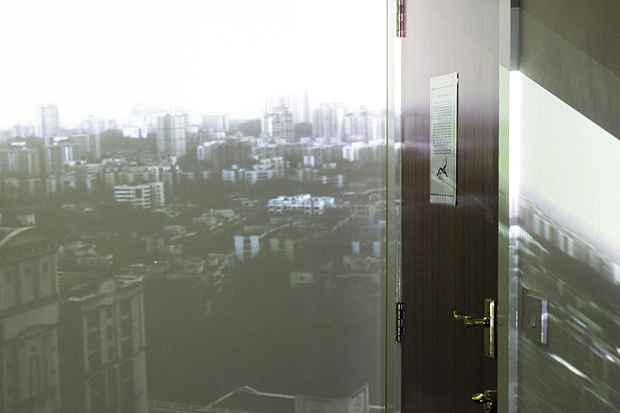
 ^Texture: Projecting on the floor carpet.
^Texture: Projecting on the floor carpet.
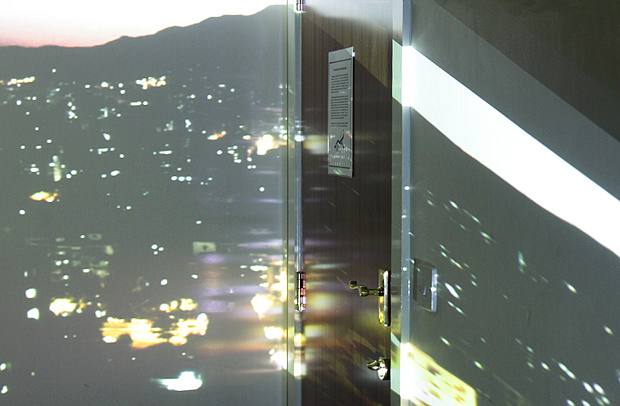 ^Distorted night video on the same door.
^Distorted night video on the same door.
 ^Texture: Regular projector produces visible lines and pixels that cover the wall.
^Texture: Regular projector produces visible lines and pixels that cover the wall.
This is a series of experiments on how Mumbai city lights and sound interact with familiar spaces around me. Earlier I used overlapping projections and shadows to express a conflicting bipolarity within Mumbai. As I attempt to integrate relevant space and sound into the experience, location is one of the most important factors that come into play. One option is to use the projections and video in a suitable outdoor space, and the other is to use a place personal and familiar to me, referencing my memories of the city and my identity as a Mumbaikar. Here I've experiments on the walls, ceiling and floor carpet, observing the effects of the night videos and day videos on various coloured surfaces and corners. The results encouraged me to try more spontaneous variations, rather than make just one well-planned installation.
Genius Loci
In phase one I succeeded in defining my area of study, learning about projecting video, building installations, and the limitations involved. Phase two is about capturing a "feeling" of Mumbai. But what is this feeling, this intangible "sense of place," and how can I create a space that communicates it effectively. The city is a multi-layered, complex and rich experience. No one has identical perceptions of something that is so much in flux, so huge in scale. At the same time there is an underlying recognition of its flavour, a distinctive personality that can be called its Genius Loci. In trying to pinpoint this atmosphere of Mumbai, something which is intrinsic in my memories of the city, and which all Mumbaikars are familiar with, I questioned my original plan of building a 360 panorama in a closed studio space.
An outdoor location is one of the ways I plan to solve this riddle. Although it is technically difficult to build an installation outside a controlled studio set-up, I am of the opinion that the right place can physically represent the city, and communicate a lot more than well-edited video or sound ever could.
Place-making is discussed in detail here.
Reference
Menin, S. (2003). Constructing Place Mind and Matter. London: Routledge.
Mumbai Memories
After noticing the autobiographical trend in my work, I looked at my past posts on Mumbai. I've kept a partially anonymous life blog since 2009 and this became an important resource for me to remember what images and events I felt were important enough to blog about. The oldest posts about Mumbai are from August 2009. I've inserted some photographs from the life blog below:




Update April 27th: The image below is a sketch of a concept inspired by one of my school memories of Mumbai. While travelling on the school bus, we stopped to drop off a student and I noticed a single chappal on the tar road. There was a small pool of bright blood beneath it, and a few bricks lying around it. I wondered what happened, and guessed that there had been an accident recently, and these were the leftovers. It had definitely happened recently, but no crowd of onlookers remained and the traffic on the road avoided the single slipper and bricks easily. The idea is to recreate this memory as I remember it, with the blood being bright and overshadowing the rest of the details within the picture.
Reflection
The first turning point was a discussion with Phil Beards about focussing my topic of interest for the MA. Based on Phil's suggestion, I ended up brainstorming and created a mind map which outlined the proposed area of study.Initially I was uncertain about which bipolarity I should study and looked at several opposing factors within Mumbai such as ugly and beautiful and poverty versus luxury. During the course of my research on Mumbai's architecture, I stumbled on an article by Ashraf K. Kazi (2005) where he mentions the concept of elsewhere and it's relation to the evolving architecture of Mumbai city. This conflict between the elsewhere and the here was the perfect example of bipolarity; juxtaposing the luxurious pseudo-greek high rises of Hiranandani with the crowded squalor of the Tunga slums.
A brainstorming discussion with Liam Birtles helped expand my thoughts on the final installation work. We discussed several ideas and technical possibilities, hidden cities, the use of shadow, and how time could also be a factor within the installation. Eventually the most important event was the installation test in December which helped me see my work in it's intended medium for the first time. Several issues needed much more thought such as the use of space, time and sound and how these could in turn interact with the audience while flowing with the theory and concept. This first experimental installation and the consequent discussions and findings helped clarify my concept and goals for phase 1.
A string of events in the last two and a half weeks of phase 1 helped synthesize my aims and theoretical framework. A peer critique encouraged me to continue using real shadows and a group critique steered me towards the works of Kit Wise and theories of heterotopia. While creating the presentation for the group critique I also analyzed and listed the technical limitations of my current installation experiments. And a final tutorial with Phil helped me start planning for Phase 2 and the use of interactive sound.
Phase 1 was an experimental phase, just like the final work from Phase 1 is an experiment and not a formal installation to be placed in an art gallery. Several factors will be taken into account for Phase 2, based on the findings of the installation experiment conducted on 20th of January. These will probably include research into the history of shadows, use of sound, technical details, coding, the 360 panorama and how these additional layers could affect the audience experience. Most importantly phase 2 will not be an experimental phase, but a project phase which will focus on the dissemination and application of my practice.
Reference
Ashraf, K Kazi. (2005) Masala City: Urban Stories from South Asia. The New Mix: Culturally dynamic architecture, Sara Caples and Everardo Jefferson, Architectural Design. Vol 75, No 5 Sept/Oct 2005, pp.67-68.
Documentary: Bombay Railway
Bombay Railway is a two-part documentary by BBC 4 that paints a picture of an overcrowded train system pushed to its limit by 6 million commuters a day, full of people who strive towards their goals tirelessly, in the city of dreams that is Mumbai. I was a frequent traveller myself, so it was interesting to watch the documentary which is from the point of view of an observer rather than someone who has lived the experience. What we call "Crush" is the super rush hour that's also mentioned in the film, and the statistics and video footage is more frightening than actually travelling in the crowd. As an observer, the sight of 5000 or more people getting into trains meant for 1200 people within 30 seconds is a spectacle. As a participant it's an exciting, thrilling, and somewhat harrowing daily reality. The fact is that the local trains are cheap, charging about 1 penny a mile and the trains are always on time with a 97% efficiency, so despite the odds the system is dependable and vital to the normal functioning of Mumbai.
In the first part of the film, the stories about runaway kids living on Mumbai platforms sounds sunny and positive, giving the audience hope that things could turn out well for these children that have escaped abusive families. However describing a railway station as a "family" where you get to "be yourself" is overly optimistic and misleading. Most of these runaways end up being abused, drugged and treated badly. I have seen them being thrashed by cops or others on more than one occasion. Life for kids in such places is rarely a happy place.
Various other issues such as illegal hawking, crossing tracks, and the terrorist bombings are also mentioned. Below are a few screenshots from the film:
Documentary: Shot in Bombay
[vimeo http://www.vimeo.com/6735583] The documentary uses a lot of "typical" shots of Mumbai, shots of the streets, children, and film sets, with catchy Bollywood music in the background. The opening sequence above is especially successful in creating a rich, romantic atmosphere. Here are some screenshots from the sequence which best represent this slice of the city:
Related Posts that study the city's representations in the media: Bombay Cinema, An Archive of the City | Elsewhere Places | Bombay Book Cover | 26/11 Attack | Dharavi Documentary | Places we Live
Bombay Cinema: An Archive of the City
Initially the concept of the "elsewhere" that inspired my focus on the conflict between the real and the ideal in Mumbai came from an article by Ashraf K. Kazi about the "Masala City." He went on to give examples from Bollywood movies such as Mein Prem Ki Diwani Hoon, where the entire movie unfolds in an imaginary Indian town called Sundarnagar. This lead me to look into Bollywood and the ways it represents Mumbai. The movie-making industry in Mumbai has come of age - now more than a 100 years old, and it reflects the city's conflicts, politics and desires as much as its people. Excerpts from the book Bombay Cinema by Ranjani Mazumdar:
"The Bombay-based film industry resonates throughout the world, in places where the Indian diaspora has settled and in places where nonnative speakers appreciate its unique choreography of music, melodrama, fantasy, and spectacle. Much of popular cinema’s success can be attributed to what many in the industry refer to as a “techno folk” form, which combines folk traditions with new cinematic technology."
"Drawing on various visual, literary, and artistic traditions, each with its own distinct history, popular Indian cinema is an evolving, unabashedly hybrid cultural form that narrates the complicated intersection between tradition and modernity in contemporary India. Film production started in India almost simultaneously with other filmmaking countries, beginning in 1896."
The author also mentions the Indian street, as a place which contains Indian life and all its related conflicts. Although I am currently focussing on building a virtual Mumbai skyline, creating a street could also interest me in the future.
"In a rare piece, Arjun Appadurai describes the Indian street as the space where “India eats, works, sleeps, moves, celebrates and worships. The street is a stage that rarely sleeps” (1987, 14). Through a vivid visual anthropology (across different cities of India), Appadurai traces both the historical formation and the function of the street, as well as its present location in the cultural and social life of India. The multiple activities and events of the street are a clear reminder that the “sharp demarcation of public from private spheres is a recent addition to the Indian consciousness” (1987, 14). For Dipesh Chakrabarty, the modernist categories of the public-private divide were challenged by the street in India where “People washed, changed, slept...out in the open” (16). But neither Appadurai nor Chakrabarty refers specifically to the presence of women in the street. The Indian street as described by these writers is ubiquitous and peopled by all types engaged in different forms of activity in an almost genderless space."
Reference:
Ashraf, K Kazi. (2005) Masala City: Urban Stories from South Asia. The New Mix: Culturally dynamic architecture, Sara Caples and Everardo Jefferson, Architectural Design. Vol 75, No 5 Sept/Oct 2005, pp.67-68.
Mazumdar, Ranjani. Bombay Cinema : An Archive of the City. Minneapolis, MN, USA: University of Minnesota Press, 2007. p 18, 19, 120. http://site.ebrary.com/lib/aib/Doc?id=10206194&ppg=18 Copyright © 2007. University of Minnesota Press. All rights reserved.
Circle of Confusion
One line from this article grabbed me: "It is impossible to grasp the city, one can only take a fragment of it."
 [Image Source] | Circle of Confusion by Joana Hadjithomas and Khalil Joreige | Photographic installation | Mirror, colour digital prints (3,000 pieces), ink inscriptions.
[Image Source] | Circle of Confusion by Joana Hadjithomas and Khalil Joreige | Photographic installation | Mirror, colour digital prints (3,000 pieces), ink inscriptions.
The work resonates with the aim of my project, as it seeks to represent the city of Beirut: how it's various and poorly documented conflicts have cut it into pieces, making it impossible to make a "true" picture of it, inviting the user to destroy the city by taking pieces off the board and scattering them, revealing a layer beneath. One of the questions brought up in the article is: "How does the viewer’s participation in this work, by removing and taking possession of a fragment of the city of Beirut, add to the meaning of Circle of Confusion?"
Similarly I can attempt to create a question for my work: How does the viewer's participation in this work, by revealing the hidden city of Mumbai in the viewer's shadows, add to the meaning of Mumbai+Bombay?
Peer Critique
We organized a peer critique for the 14th of December to discuss our work. At this point most people are midway through their projects. About 12-15 part-time and full-time MA students attended the workshop. I presented a video and photographs from a recent installation test. Here are some points of reaction to my work: > Simple, yet effective
> Interactive without the use of very complex technology. Since the user is essential to viewing the artwork.
> Use of technology is secondary to the concept.
> Prefer to see it projected on walls, instead of floor since it's more natural.
> Want to see more animation: people, events, day changing to night.
> Want to see a more dramatic difference between the two skylines.
> One person interpreted the "real" city as a doomsday city since it contains images of poverty and burning buildings.
> Important to note how most people who view the work generalize it to any city rather that Mumbai, unless specifically told.
> Prefer the rough sketchy version of the city.
> Almost a film.
Overall, I realized how different each person's work and philosophy was, from Fine Art to Animation finding common ground is not easy since its like each person is from different planets. At the same time it was useful to see how a fine artist or animator would react to my work. Additionally, various topics such as self-reflexive films, and the "axiomatic" were discussed. I also discovered a piece of work which later became vital to my understanding of my practice. It is called Circle of Confusion by Joana Hadjithomas and Khalil Joreige, 1997. See my notes on this work here.


